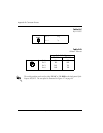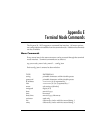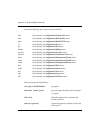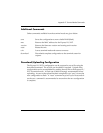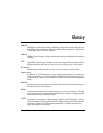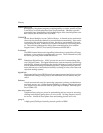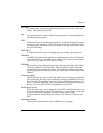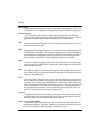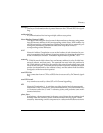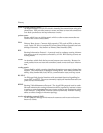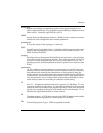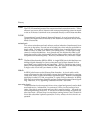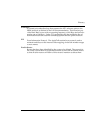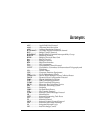
Glossary
152 Express XL/XLT User Manual 61200.070L1-1
interworking
Communication between two types of networks or end equipment. This may
or may not involve a difference in signalling or protocol elements supported.
Internet Protocol
A TCP/IP protocol describing software that tracks the Internet address of
nodes, routes outgoing message, and recognizes incoming messages. Used in
gateways to connect networks at OSI network Level 3 and above.
IPX
Internetwork Packet Exchange. A Novell NetWare protocol used to move in-
formation across networks.
ISDN
Integrated Services Digital Network. A network architecture that enables end-
to-end digital connections. The network supports diverse services through in-
tegrated access arrangements and defines a limited set of standard, multipur-
pose interfaces for equipment vendors, network providers, and customers.
Interworking with a public switched telephone network is retained.
jabber
An error condition in which a network device continually transmits garbage
onto the network. In IEEE 802.3, a data packet whose length exceeds that pre-
scribed in the standard.
jitter
The slight movement of a transmission signal in time or phase that can intro-
duce errors and loss of synchronization for high-speed synchronous commu-
nications. See phase jitter.
LATA
Local Access and Transport Area. One of 161 local telephone serving areas in
the United States, generally encompassing the largest standard statistical met-
ropolitan areas. Subdivisions established as a result of the AT&T divestiture
that now distinguish local from long distance service. Circuits with both end-
points within the LATA (intraLATA) are generally the sole responsibility of
the local telephone company, while circuits that cross outside the LATA (in-
terLATA) are passed on to an interexchange carrier.
loopback
A diagnostic procedure where data is sent to the device being tested, and the
output of the device is fed directly back to its input, looped around, and the
returning data is checked against that which was sent.
Media Access Control (MAC)
As defined by the IEEE, the lower of the two sublayers of the OSI reference
model data link layer. The MAC sublayer is concerned with media access is-
sues, such as whether token passing or contention is used.



